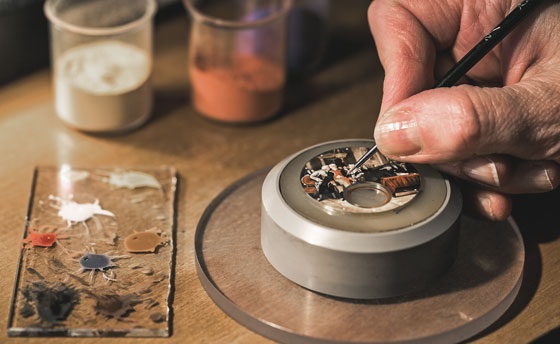
Last October, the Federal Council approved an indicative list of eight Swiss traditions which will be candidates for inclusion in the Intangible Cultural Heritage of Humanity (ICH). These categories include the protection of know-how related to mechanical watchmaking.
Today, many skills related to watchmaking have disappeared or are being kept alive by a handful of enthusiasts. Very few of them are taught and their future is therefore under threat. On 2 December last year in Zurich, Jaeger-LeCoultre proposed that enamelling, an art which has been in existence for thousands of years and which is still practised by the manufacture in Le Sentier, should be added to the ICH.
The earliest records of enamelwork date back to the fifth century BC. Miniature paintings on enamel are probably the most consummate form of this very ancient art. Appearing for the first time in the 17th century to decorate jewellery and precious objects, enamel miniature uses as its medium a plate of metal covered with translucent enamel onto which the artist, with a brush, transposes the colours to be glazed. At the end of the 18th century, an eye for fine detail combined with a taste for perfection led enamellers in Geneva to develop «peinture sous fondant», or flux enamel. This improved version of miniature painting on enamel is characterised by its artistic precision and the conservation of its splendid appearance over time.
Enamel miniature is a discipline which is no longer taught today. However Jaeger-LeCoultre perpetuates this savoir-faire within its manufacture. Two of its employees with a passionate interest in the subject, who have moreover decorated many of the dials of the Reverso, teach this skill to a small team of young apprentices. A new addition to the ICH list implies not only holding the keys to knowledge of the art, but also doing everything possible to ensure its survival for future generations.
January 15, 2015


 News
News